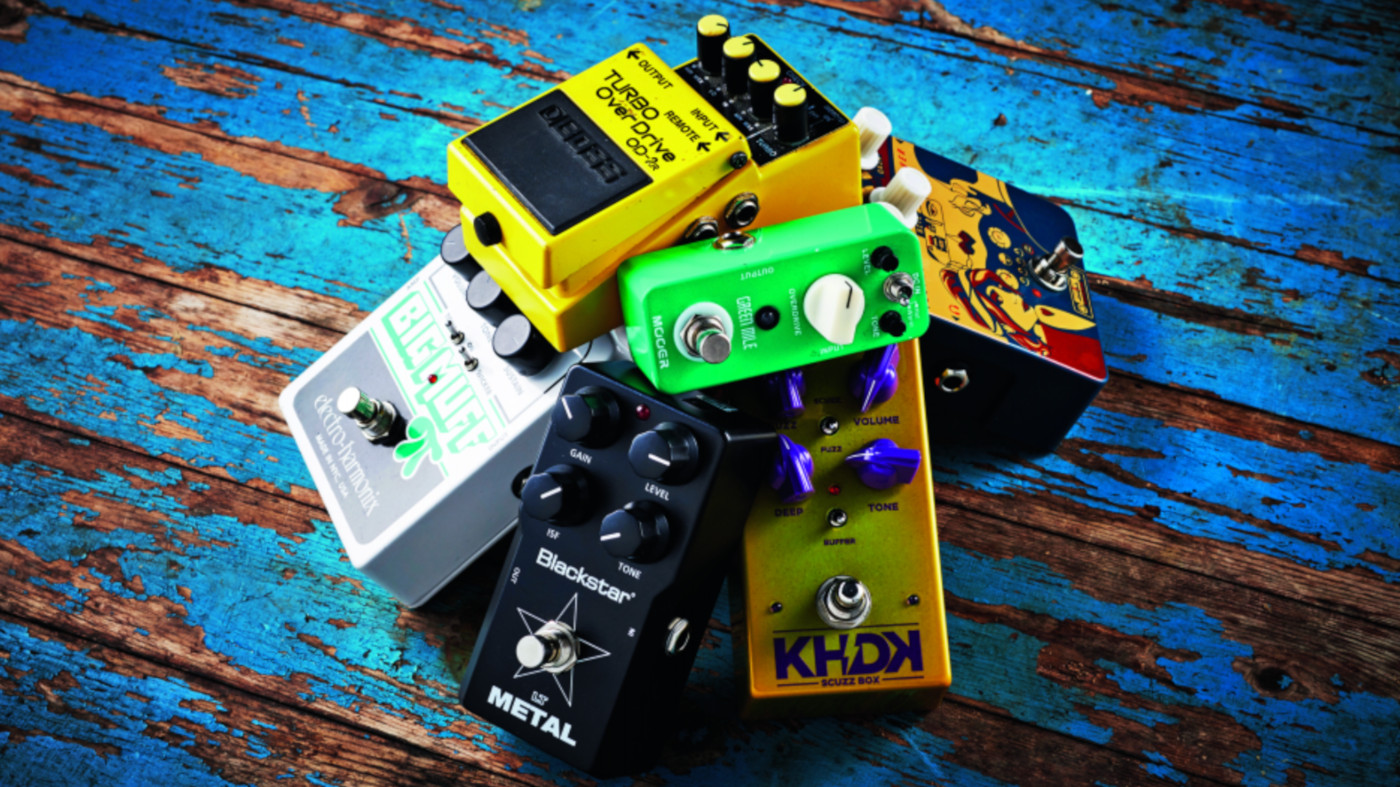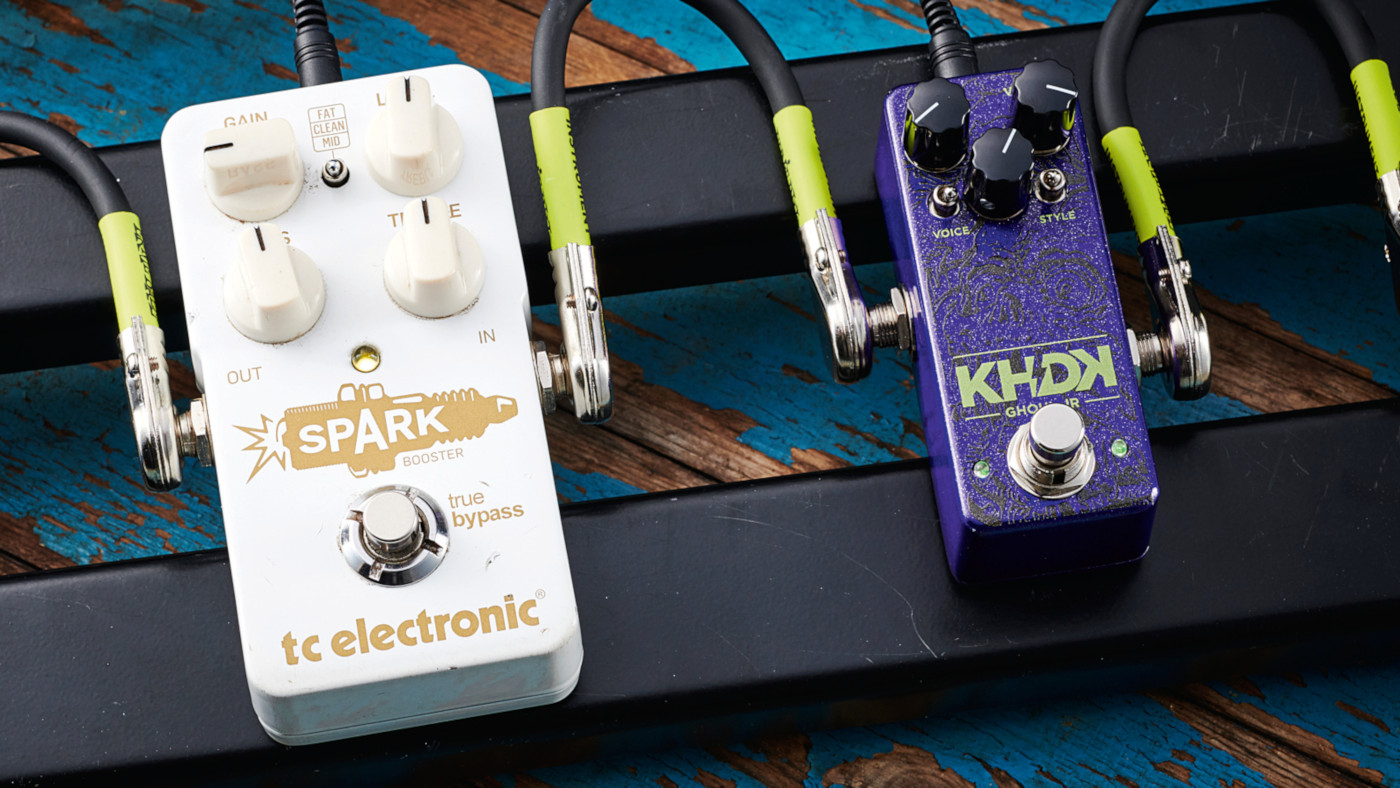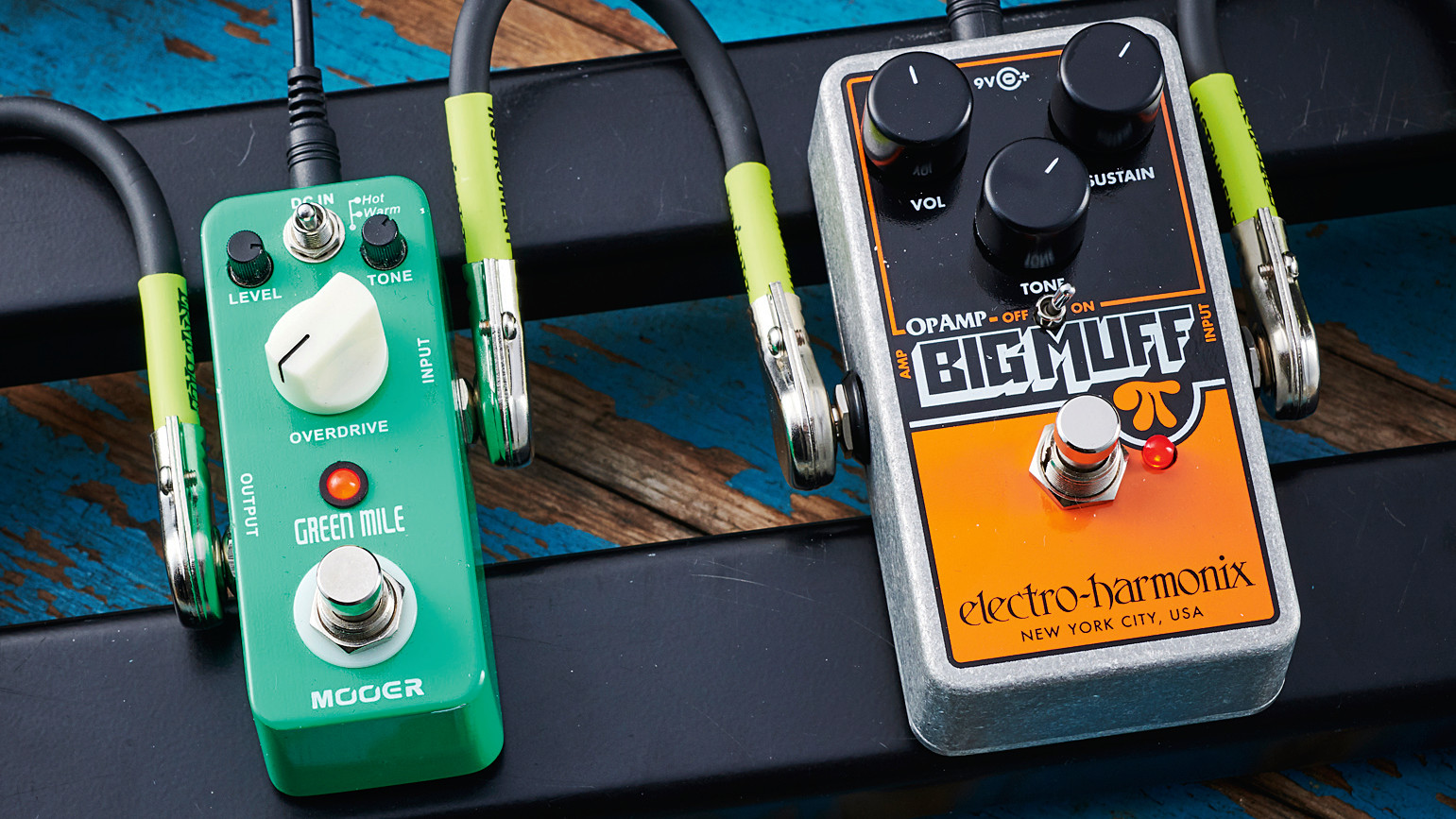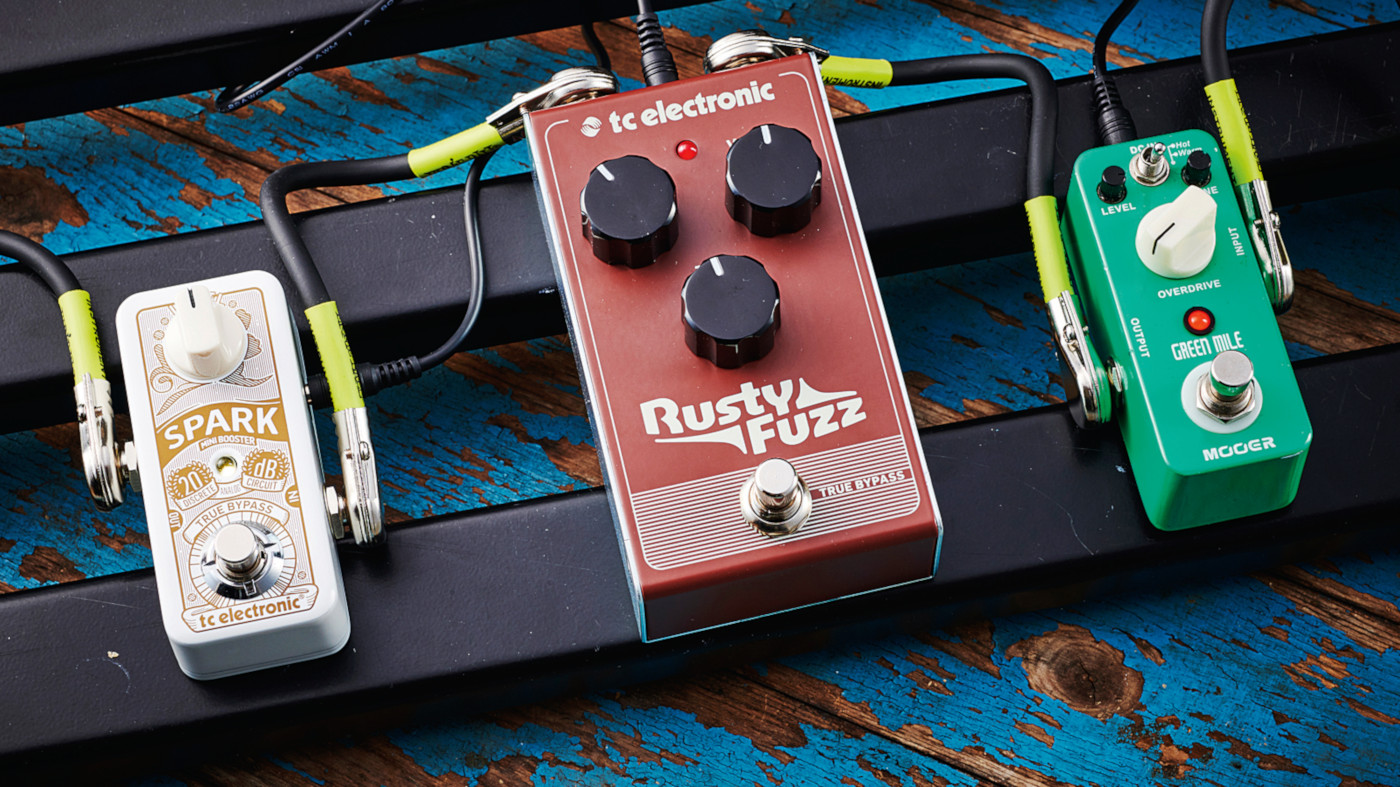Pedal gain stacking: everything you need to know
Take your overdrive and distortion tones into new territory

We take a look at the art of gain stacking, including some common overdrive pedal combos to get you started...
What is gain stacking?
This is when you use multiple pedals that add gain to your signal. These can include compressors, preamps, boosts, overdrives, distortions, and fuzzes - not to mention your amp itself!
You might have heard studio engineers or producers talk about ‘gain staging’ being important for recording; gain stacking is essentially the same process for guitar - crafting a tone by carefully increasing the gain, compression and clipping applied to a signal.
The most simple version of this, of course, is to put a powerful boost or preamp in front of a tube amp, crank up the pedal and listen to the amp break up into overdrive.
In most cases, you’ll already be gain stacking without realising it, as elements of your chain will have preamps, or blend controls, which are often built using an amplification stage.
Legendary tape reverbs like the Echoplex EP-3 and Roland Space Echo included a preamp, which acted as a boost - hence why Nick Zinner from Yeah Yeah Yeahs has a tapeless Space Echo in his setup. Many pedals also incidentally have preamps, like the excellent one in the Electro-Harmonix Deluxe Memory Man, or the Catalinbread Topanga Spring Reverb.
Why should I consider it?
There are a number of compelling reasons. Firstly, you can often get very musical overdrive at lower volumes. Second, you can get much higher levels of distortion from your gain pedals or amps.
Get the MusicRadar Newsletter
Want all the hottest music and gear news, reviews, deals, features and more, direct to your inbox? Sign up here.
One of the classic modern metal tones is a Peavey 5150 with a Tube Screamer in front - adjust the tone control to taste, turn the level to full and the drive right down. Slamming any decent tube amp like this is likely to greatly change the character of the amp’s distortion.
Third, the timbre of the compression can be very distinctive, leading to guitar tones that just aren’t possible in other ways. Fourth, small changes in the combination of pedals can sound wildly different - great if you’re in a covers band and need to cover Hendrix and Zeppelin in the same night.
Finally, different drives have different EQ profiles - for example, using a treble boost at either the start or end of your stack will brighten up otherwise muddy drives and add some top-end sparkle to your sound.
Are there downsides?
Most obviously, you need to own multiple pedals, although these days even budget micro-pedals are of a high quality. You need to spend some time with your gear working out the order, and listening to what works in different situations.
If you switch amps, you might find that pedals react differently. Finally, if you have several gain pedals on your board, you might discover that you don’t have space for much else!
1. Tube Screamer-style overdrive, boost, slightly dirty amp

This setup uses a pedal inspired by the classic Ibanez Tube Screamer, although most op amp-based overdrives will work. The Tube Screamer has a pronounced mid-bump, so for a different EQ profile, you could try a Zendrive or Timmy. We’re placing a TC Electronic Spark after the drive pedal so that it adds clean volume, and brings back in some top-end.
As the output control of the Tube Screamer will limit the volume jump available, it’s preferable to put the boost afterward, unless you’re just looking to generate more clipping - with it in front, there’s a jump in compression but it’s not any louder.
If that’s not enough saturation, stack with a second Tube Screamer-style drive. This creates a more saturated tone and richer overtones. With the boost after, the signal is fatter sounding and the amp is being hit harder, which results in some beautiful tube compression.
2. Big Muff, Tube Screamer-style overdrive, clean amp

This setup uses a Big Muff, which normally generates its square-wave signal using two cascaded soft-clipping amplifier stages. We’ve opted for the op-amp version of 61 the circuit, instead of using two sets of three parallel soft-clipping diodes.
We’re using a Tube Screamer-style overdrive as a boost, by turning the gain control right down, and the volume most of the way up. Billy Corgan used an op-amp Big Muff for the Pumpkins’ signature sound, but he was often to be found stacking the pedal with an MXR Distortion II, especially in the studio.
With our Tube Screamer in front, there’s a slight jump in perceived volume and more compression from the amp. With it after, there’s a big jump in volume, which drives the amp harder, and the Muff tone sustains longer. The Muff is also noticeably affected by the EQ profile of the Tube Screamer, becoming much punchier.
3. Tube Screamer-style overdrive, Fuzz Factory-style fuzz, boost, clean amp

We’ve chosen a Fuzz Factory-style fuzz with the Rusty Fuzz because it’s transistor-based and gloriously temperamental. At the end of the chain, we’ve got our TC Spark for clean volume. The idea is to get a singing lead tone.
The Fuzz Factory often gates notes with a velcro-like buzz, so we’re using the Tube Screamer to slam the front-end of the Fuzz Factory and make it sustain longer before each note collapses into feedback.
We’ve got the gain rolled back, but it will still be adding some clipping and compression. The EQ profile of the Tube Screamer emphasises mids, so the fuzz’s bass doesn’t become ‘woofy’. To reach face-melting volume, we’ve got our Spark to boost the signal and again add treble back in.
Total Guitar is Europe's best-selling guitar magazine.
Every month we feature interviews with the biggest names and hottest new acts in guitar land, plus Guest Lessons from the stars.
Finally, our Rocked & Rated section is the place to go for reviews, round-ups and help setting up your guitars and gear.
Subscribe: http://bit.ly/totalguitar
“A pedal that sings with harmonic richness and blooming touch response”: Tone King offers up boutique tube amp tones for your pedalboard with the Imperial Preamp
“Each and every unit is perfectly dialled in to the 'sweet spot' that can be so elusive to find in vintage pedals”: Pigtronix’s Gas Giant is a high-gain fuzz pedal with a FET-driven onboard noise gate










